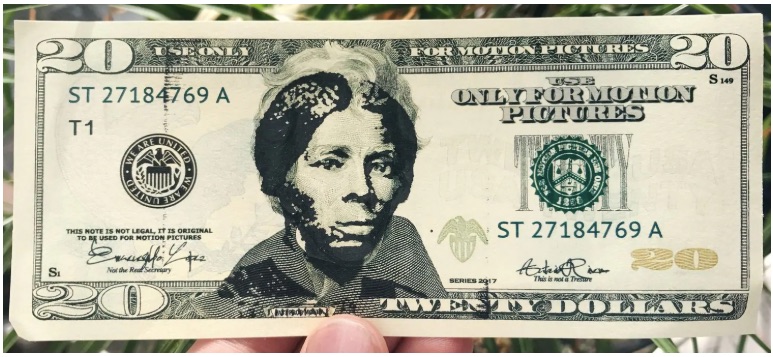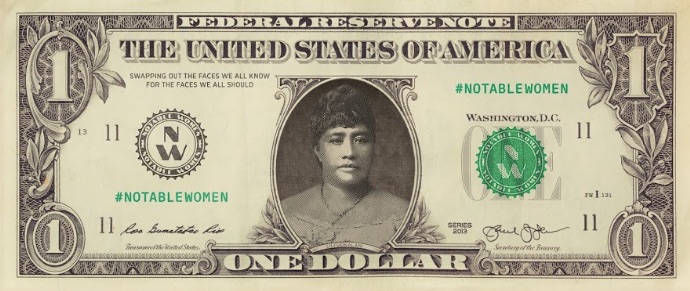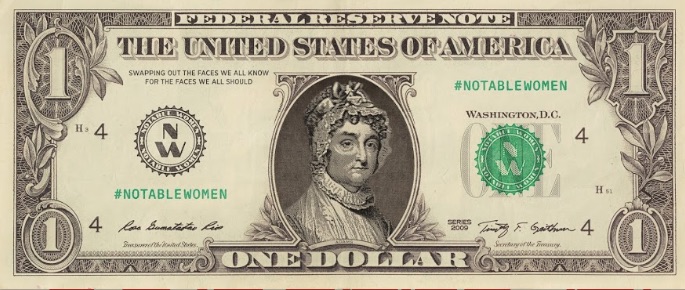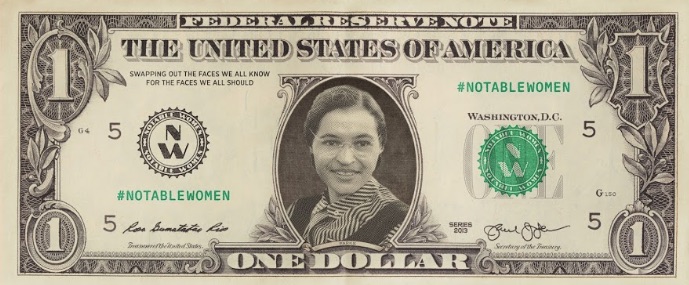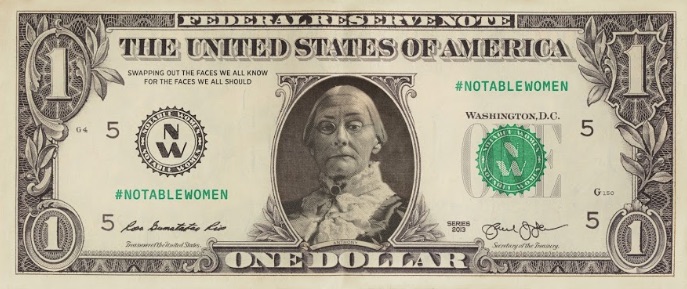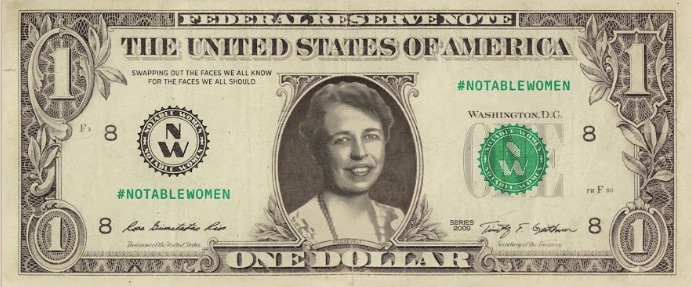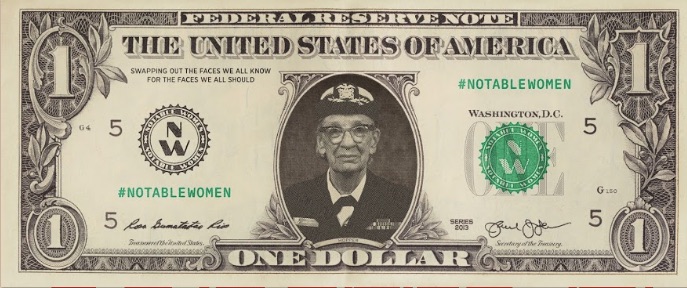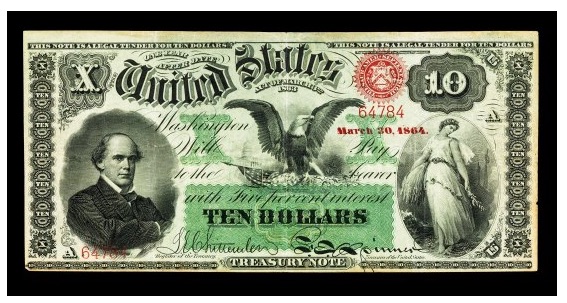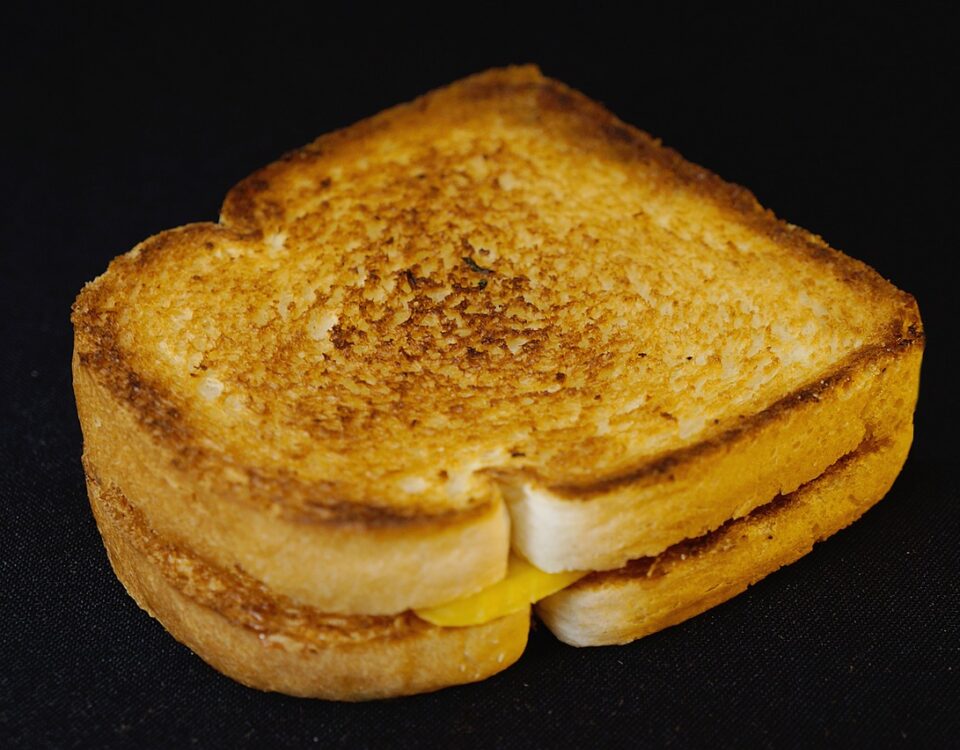
The Three Million Dollar Baseball Card
May 23, 2019
Our Weekly Economic News Roundup: From Scooping Ice Cream to Tasting New Coke
May 25, 2019During 2016, Treasury Secretary Jacob Lew said Harriet Tubman would replace Andrew Jackson on the front of the U.S. $20 bill while Jackson would move to the back. As a woman, an escaped slave, and an abolitionist, Ms. Tubman could bring some balance to a currency whose images are mostly white men. Furthermore, the preponderance of the $20 compared to all other denominations meant the decision would immediately have some clout.
Now though, Treasury Secretary Steve Mnuchin has revised the plan. Delaying the design change for at least six years, he said someone else could decide.
To show why we need women on our money much sooner, let’s use some virtual reality.
An All Female Currency
Through a partnership between a former treasurer of the U.S. and a group at Google, the Notable Women project materialized. They (as do I) believe that we need more women on our currency. So they created the images that display the difference. I’ve copied eight of their 100.
Victoria Woodhull (one of my favorites) was the first woman to run for the presidency. A journalist, she also led a Wall Street brokerage business, and was a women’s rights activist:
Queen Lili’uokalani was Hawaii’s first and last queen:
Abigail Adams was an influential advisor when her husband John was president:
Rosa Parks was the civil rights activist whose refusal to move from her seat on a bus launched the Montgomery Bus Boycott:
Susan B. Anthony fought for women’s suffrage, abolition of slavery, temperance, and labor’s rights:
Wilma Mankiller was the first woman to lead the Cherokee Nation. A Native American rights activist, she focused on economic development:
Eleanor Roosevelt was a close advisor to her husband Franklin when he was president. An activist who fought for women, minorities, and labor, she also served as the U.S. representative to the United Nations:
Grace Hopper was in the first generation of computer scientists and a Rear Admiral in the U.S. Navy:
First Women on Cash and Coin
Most of the females who have been on our currency are rather different from those Notable Women. Sadly, many of them weren’t even real people. Idealized as Greek goddesses, milkmaids, or wearing American Indian attire, one scholar said they were “figments of the male imagination.”
Below we have Hebe, goddess of youth (with George Washington).
From: Princeton University
A woman with “flowing hair” is on the first coin from the U.S. mint. Supposedly an image of what liberty is supposed to look like, here she is (below) as the “flowing hair cent.” The penny (left) was delivered in 1793 and the dime, just before. Her hair was considered rather wild.
From: U.S. Mint
This is a $10 Treasury Note from 1864.
Below, Lady Liberty is on a 1933 dollar coin.
Our Bottom Line: Expectations Bias
Borrowing the idea of expectations bias from behavioral economics, we can see why having more women on our money is crucial. Our expectations bias shapes how we interpret outcomes. In a classic lab experiment, when students were told which mice were smart, they really believed they were although the information was fake.
Similarly, once we regularly see successful women, our palette of female adjectives could move away from age old stereotypes to what women are really doing today. And then, once our expectations change, so too will our behavior at work, at home, and in government.
My sources and more: The NY Times is one of many places to read about the Tubman delay. From there (or instead), I recommend the Notable Women with Google website and this 2016 NY Times summary of the currency image changes.
Please note that several of today’s sentences and images were in a previously published econlife. Also, our featured image is a $20 bill with Harriet Tubman stamped over the Jackson picture. The Washington Post says we can buy the stamp at ETSY.
![econlifelogotrademarkedwebsitelogo[1]](/wp-content/uploads/2024/05/econlifelogotrademarkedwebsitelogo1.png#100878)

